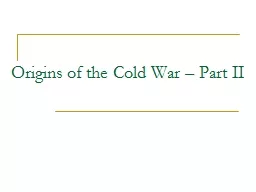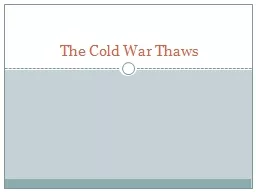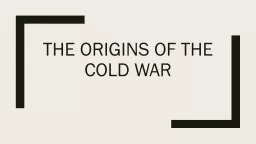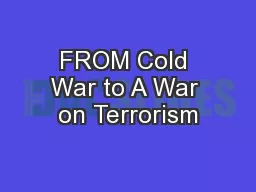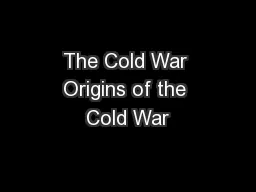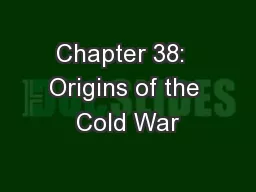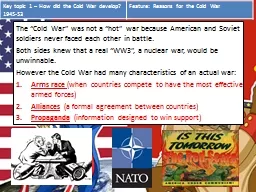PPT-Origins of the Cold War – Part II
Author : scoopulachanel | Published Date : 2020-07-04
Origins of the Cold War 8 Kennans Long Telegram amp Containment Developed by a young diplomat and State Department Soviet specialist George F Kennan The Long
Presentation Embed Code
Download Presentation
Download Presentation The PPT/PDF document "Origins of the Cold War – Part II" is the property of its rightful owner. Permission is granted to download and print the materials on this website for personal, non-commercial use only, and to display it on your personal computer provided you do not modify the materials and that you retain all copyright notices contained in the materials. By downloading content from our website, you accept the terms of this agreement.
Origins of the Cold War – Part II: Transcript
Download Rules Of Document
"Origins of the Cold War – Part II"The content belongs to its owner. You may download and print it for personal use, without modification, and keep all copyright notices. By downloading, you agree to these terms.
Related Documents

